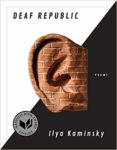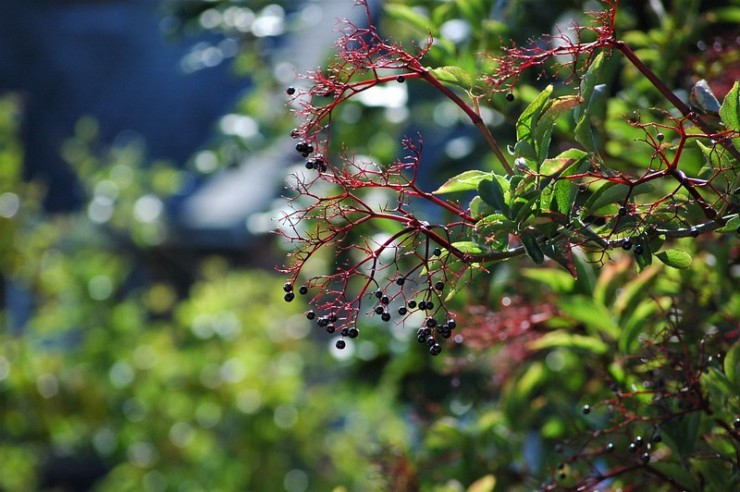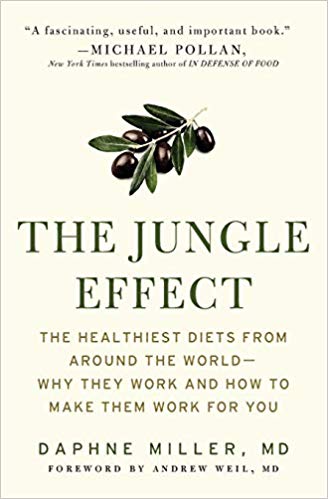My first taste of Chinese cuisine came in the form of chop suey my mom made using ground beef, canned chop suey vegetables, and cream of mushroom soup. I’m 90 percent sure the recipe came from the back of the can of chow mein noodles we sprinkled generously on top, the whole meal likely a marketing ploy by the La Choy company to bring quick, “exotic” foods to the tables of bored middle class Americans. And it worked, at least for my family. If you’d asked me back when I was a kid in the late 70s if I liked Chinese food, I’d have given you a cool thumbs up just thinking about those water chestnuts smothered in gravy.
Later, after I left for college, a Chinese buffet moved into a nearby town, and I’d occasionally eat there with family when I was home on breaks. We’d pay our $8.95, then load up on sticky sweet and sour pork, spicy General Tso’s chicken, and greasy egg rolls. Vegetables and fruits appeared mostly in supporting roles: pineapple alongside breaded and deep-fried meat, broccoli soaked in beef gravy, tiny bits of carrot and peas nestled among white rice and pork. Occasionally, as I shoveled forkfuls of fried rice in my mouth, I laughed about the “fake” Chinese food from my childhood days now that I knew what “real” Chinese food was.
Then, in 2010 I found myself in China. By that time, I’d had far more authentic Chinese food when I visited Chicago’s Chinatown or dined with a Chinese friend who made her mother’s recipes from the kitchen of her small Chicago apartment. I’d even sampled beef tripe (the lining of the small intestine) at a Taiwanese Dim Sum restaurant, though I’d probably never have tried it if I’d actually known what it was before popping it in my mouth.
But seated around a table in remote Southwest China, eating home-cooked food in bowls with chopsticks, I suddenly realized how wrong I’d been all along about “Chinese” food. Sure, what I’d been eating my whole life was inspired by the flavors and ingredients of some dishes available in China. But it was made using the highly processed, commercially packaged foods loaded with salt, sugar, fat, and preservatives that the industrial age brought us. The Chinese food I’d been eating wasn’t healthy, and it wasn’t really Chinese. But here, in a part of China less influenced by the industrial world, I wasn’t eating “Chinese food” either. I was simply eating whole foods made with locally grown ingredients, based on the traditions and tastes of the people who were serving it: mostly vegetables like stir-fried lotus root, carrots, and eggplant. A little sautéed pork and chicken and occasionally other meats. And always rice—a little at the end of the meal—after we’d had our fill of the other dishes.
According to physician, professor, and author Daphne Miller, the food I ate in Guiyang was part of an indigenous diet, “born when a group of people use their traditional knowledge to make a complete diet using local foods.” In her book The Jungle Effect: The Healthiest Diets from around the World—Why They Work and How to Make Them Work for You, Miller talks about several such indigenous diets and how they keep people healthy and protect them from many of the modern chronic diseases that plague most of the industrialized world.
Oddly enough, my experiences with Chinese food represent the history of food in most cultures around the world … only in reverse. We don’t have to go too far back into our own family history—many of us only a generation or two—to find our ancestors eating a healthier, indigenous diet, guided by basic food-selection instincts, categorized by University of Pennsylvania psychologist Paul Rozin, PhD, as imitative, sensory, and post-ingestive. Basically, this means that throughout time, people have always eaten what others before them ate; what looked, smelled, and tasted good to them; and what didn’t make them sick. In a premodern world, these instincts “almost uniformly worked in our favor,” leading to the healthiest diets each locale had to offer, similar to the foods I enjoyed in Guiyang. In a post-industrial modern culture, however, these same instincts produce the opposite effect.
Imitation now leads us to mass marketing campaigns instead of our local elders. Our sensory instincts have fallen prey to processed foods that have much higher concentrations of salt, sugar, and fat and an exponentially higher caloric density. And foods that make us sick do so over long periods of time, essentially “outwitting our biological alarm system.”
In a nutshell, our food-selection instincts “seem to have turned against us as we have transitioned into a modern way of life,” Miller writes.
My childhood meal of highly processed chop suey, or even my high calorie trips to the Chinese buffet in young adulthood, are classic examples of food-selection instincts gone wrong. Whereas the simple and nutritious meals I had when I was in China not only tasted better, they would be better for me. Miller believes that kind of reversal back to a simpler, preindustrial way of eating is the key to returning to good health. And we’ll spend three weeks learning more about how to do that as we discuss The Jungle Effect for our next Tweetspeak book club.
Want to join us? Here’s a schedule for reading and discussing:
Week 1 (January 22): Introduction through Chapter 4: The Basics of Indigenous Diets and How They Work
Week 2 (January 29): Chapters 5-9: Specific Indigenous Diets and What They Have in Common
Week 3 (February 5): Chapter 10 through Appendice G: How to Find an Indigenous Diet that Works for You
Make Plans for Other Upcoming Winter Book Clubs at Tweetspeak
In 2020 we embark on our Year of Wisdom journey at Tweetspeak, and just as we approach everything we do here in a multi-faceted way, looking at any question from myriad angles—from the serious to the mischievous, from the forthright to the nuanced, from the erudite to the whimsical—our broad range of book clubs will help guide us in that journey from a variety of vantage points.


____
Want to Join Our Book Clubs? Become a Patron Today
Our book club discussions are a patron perk. You can become a Tweetspeak patron for as little as $1 a month.
$5 patrons can opt to get each book club edition delivered in full straight to their inboxes, with a photo and link to the discussion!
Photo by It’s No Game, Creative Commons license via Flickr. Post by Charity Singleton Craig.
- Grammar for a Full Life Book Club: On Becoming Less Possessive - June 16, 2021
- Grammar for a Full Life Book Club: Chilling Out on the Grammar Rules - June 9, 2021
- Grammar for a Full Life Book Club: A Passive Voice - June 2, 2021



L.L. Barkat says
Charity, I’m in! 🙂 Love your intro.
I bought the book on Kindle, because (unbelievably) my library system doesn’t own the title.
Already, I’m fascinated by the possibilities of lichen. 😉 (This, due to the discovery of Iceland’s “cold spot” status with depression, even the fact that they don’t experience seasonal affective disorder, which I think many of us in the northern regions have considered an unavoidable condition in the winter months.)
Thanks for leading us on this journey of discovery and a wiser approach to our health. (I got another book from the library as companion reading for this: Eating on the Wild Side. Should be an interesting combination.)
Charity Singleton Craig says
Glad to have you on this reading journey. The Iceland chapter was intriguing to me, too. I’m pretty sure I don’t get enough omega 3’s, and definitely not enough lichens. : )
One of the first changes i made was to add more fermented foods to my diet. Nothing too adventurous yet (no kombucha or kimchi so far), but I have been dipping bread in oil and vinegar instead of butter for breakfast and adding a little yogurt to dishes when the tastes seem to work right. Oh, and lots and lots of pickles. I also made a trip to a local Mexican grocery store for some masa harina. I haven’t done it yet, but I hope to make my own tortillas. For some reason, I’m intimidated by the prospect. I definitely plan to take the plunge before the book club get started though.
L.L. Barkat says
I haven’t gotten to the fermented chapter. 🙂
And I haven’t thought about the fact that pickles are fermented. Very cool! The only thing I might consider when it comes to pickle-consumption-volume might be the salt level. (Except, truly, I’m one of those people who can eat extra salt due to low blood pressure. 🙂 )
Do you have any sense of why you feel intimidated by the tortillas? (I am lately fascinated by questions of my own resistances—what their source might be and what I can learn from them. Intimidation feels like a genre of “resistance,” but maybe not?)
Charity Singleton Craig says
Well, as it turns out most of the pickles I eat are not fermented. I grew up in a home where we fermented pickles, so I thought all were. But as it turns out, most commercially available pickles are not fermented but instead fresh packed. I may have to change my pickle brand.
I’m not sure why making tortillas intimidates me. I think I’d feel better if I knew someone who makes them and could watch first. It feels strange to me to attempt to make such a staple of another culture all on my own. We do have a large Latino population in town. Maybe I’ll ask someone at the Mexican market I visited if they know someone who could show me. Now that I think about it, that also feels intimidating, but much less so.
And I think it would be a helpful practice for me to also mark and question my own resistance. I think intimidation definitely falls into that category … the “why” behind those inclinations would probably most helpful in self development. I think a lot of my resistance probably leads back to fear, insecurity, and a lack of control. It feels helpful even typing that.
Will Willingham says
Charity, *I* have successfully made tortillas (corn), which means they should be very doable for just about everyone! One thing I would recommend is to make sure you do invest in an inexpensive tortilla press (you can probably get one at that market) rather than thinking you can press between plates or press by hand. And the thin plastic bags you may get your produce in make a great liner (learned this trick from my Mexican friends). They can be wiped off and reused until they get holes in them. Betting they’d love to show you. Once you make them yourself you won’t really want to buy them again, unless they are freshly made.
Charity Singleton Craig says
Thanks for the tips, Will. I think I will go back to the market and see if I can find a tortilla press. I’d read about them, but wasn’t sure how critical they are to the process.
Will Willingham says
Looking forward to this discussion, Charity. I think often how our (US) diet was revolutionized by the convenience foods of my generation’s childhood and how they shaped so many of our decisions going forward. The things that, now, we tout as new are so often the ways of other cultures and we’re just late to the party.
Charity Singleton Craig says
Will — I’ve been having discussions with my dad about his experience of food changing from indigenous to industrial. I think he’s older than you, though possibly in the same generation. When his parents were children, their diets were dramatically different than his as a child, and mine was different to the same degree and so on. I think we can definitely point to the 20th century as the span when many of us in the US lost our way with food. But I’m so encouraged that there was a better way within memory of people still living. Sure, we can travel to distant countries and find secrets for healthfulness, but we can also just spend time recalling with our elders and find a better way. Well, now I’m giving away week one’s main point. I guess this is a teaser!
Sandra Heska King says
I remember those cans of La Choy. We ate a lot of them at home and then in early marriage. With lots of soy sauce. I do eat a lot of plain Greek yogurt with a generous amount of cinnamon, maybe with some fresh berries. And I’m good with a good bit of vinegar–in a salad dressing, a generous amount with cooked spinach. D is not that keen on it. He can’t believe that people actually swallow it plain by the spoonful. I can’t say I’ve got any desire to try kombucha, but I’d certainly try it over tripe. I’ll be interested to see how this book talks about rice. I’ve been trying to limit simple carbs–sticking to riced cauliflower stir-fried with an egg count. Except when we bow to Chinese takeout.
Looking forward t this.
Charity Singleton Craig says
Hi Sandy! I love hearing about the simple diet changes you are making … ones that track closely with indigenous eating. I was interested in your comment about carbs, because the author does actually talk quite a bit about it. She’s found that the diets in the “cold spots” tend to include a lot of carbs, but they are slow carbs: whole grain, high fiber, nutrient rich, and cooked al dente (for pastas and some grains). Chapter 5 discusses this extensively, and even compares high protein-low carb with high slow carb diets. I think you’d find it really interesting.
Glad to have you along!
Sandra Heska King says
I’ll be interested to see what she says about fats in the “cold spots.” And, of course, what she says about the “hot spots” since I live in one now. Fat doesn’t seem to be melting off me any faster. Ha!
Mary Van Denend says
Hello friends and fellow eaters–
I just bought a used hard copy of Jungle Effect from my beloved Powell’s, and am eager to join the discussion here. I’ve only read the first few chapters. Charity, how will this work? Do we just comment when we feel the urge or on specific book club days? Jan 22 looks like the official start date, yes?
Charity Singleton Craig says
Hi Mary! Glad you’ll be joining us! Really, you can comment at any time. The posts will be coming on Wednesdays, and as you can see from the schedule above, we’ll be focusing on certain chapters each week. But we’re not formal around here: if something comes to mind and it’s from a different chapter, then feel free to just add your thoughts.